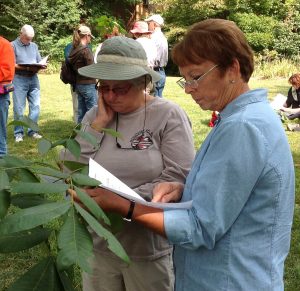Master Naturalists removing invasive plants at area parks
Chronicle Media — July 28, 2016
Volunteers with the University of Illinois Extension Fulton-Mason-Peoria-Tazewell Unit Master Naturalists program have been participating in workdays at sites in Tazewell and Peoria counties. (Chronicle Media file photo)
Local and state parks are fighting a never-ending battle of invasive plant removal. To help manage the problem, University of Illinois Extension Fulton-Mason-Peoria-Tazewell Unit Master Naturalists volunteer to identify and properly remove non-native invasive plants, such as garlic mustard and Japanese honeysuckle.
These types of plants are a threat to the natural areas in Illinois. Master Naturalist volunteers have been taking part in workdays in these natural areas where they are pulling and bagging garlic mustard and Japanese honeysuckle.
Their efforts help stop the spread of these invasive plants in Illinois, which harm the ecosystem, impact native plant diversity, and reduce wildlife habitat in natural areas.
Master Naturalists have been taking part in scheduled workdays at:
- McNaughton Park—Pekin Park District
- Chillicothe Park District
- The Nature Conservancy – Emiquon
- Peoria Parks – Forest Park Nature and Tawny Oaks
- Wildlife Prairie Park
- Jubilee State Park and Jubilee College Historic Site
- Starhill Forest Arboretum
Volunteers have also been assisting with trail maintenance, prescribed burns, Earth Day events, and as trail docents. While volunteering, Master Naturalists are helping others connect with nature to become engaged environmental stewards.
Many events and more workdays are still to come this summer. While you are visiting one of our natural areas in Central Illinois, I hope you are fortunate to see a Master Naturalist caring for the environment and sharing information about the work they are doing.
During the month of June, twenty new Master Naturalist trainees attended training classes. This year marks the fifth year of Master Naturalist training in the University of Illinois Extension Fulton-Mason-Peoria-Tazewell Unit.







